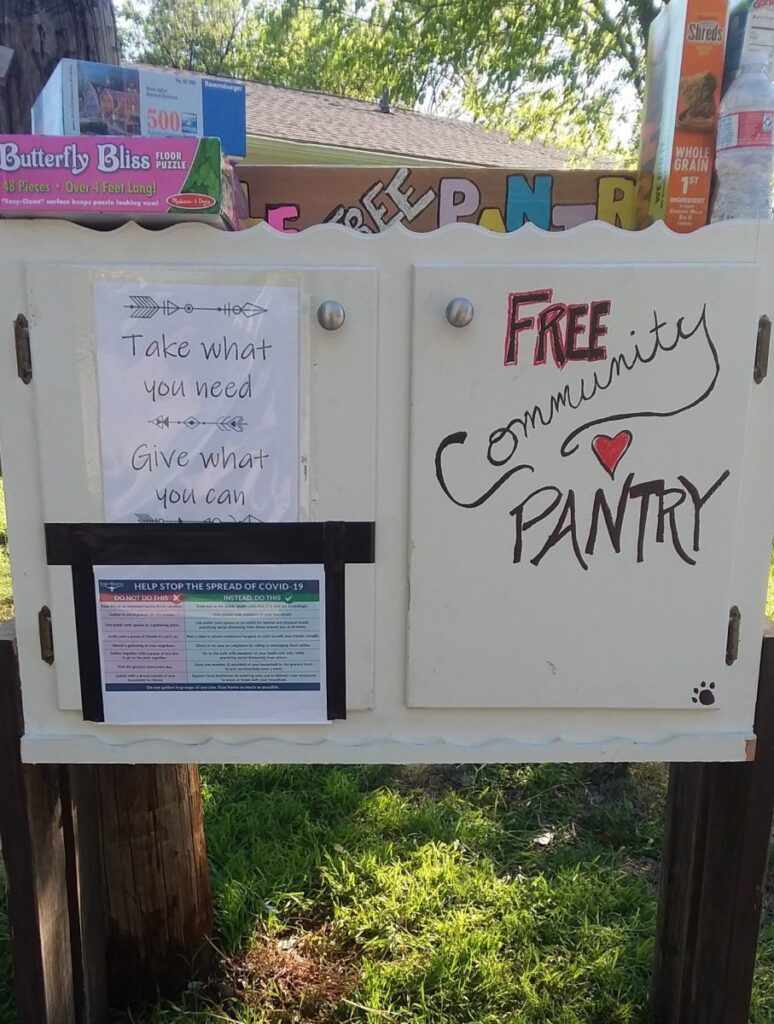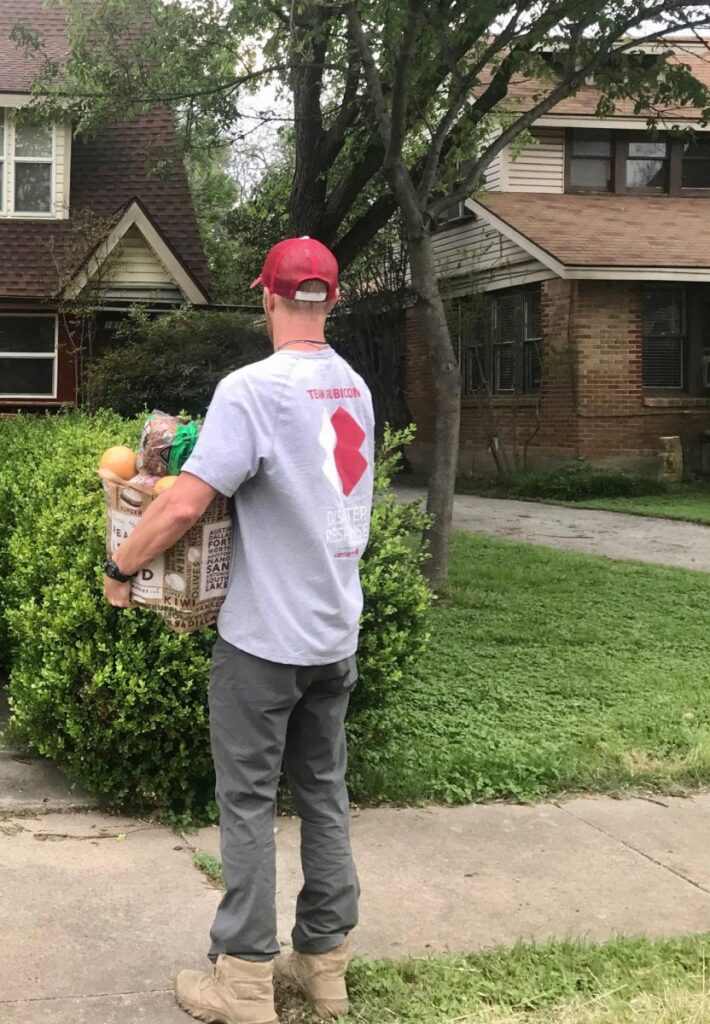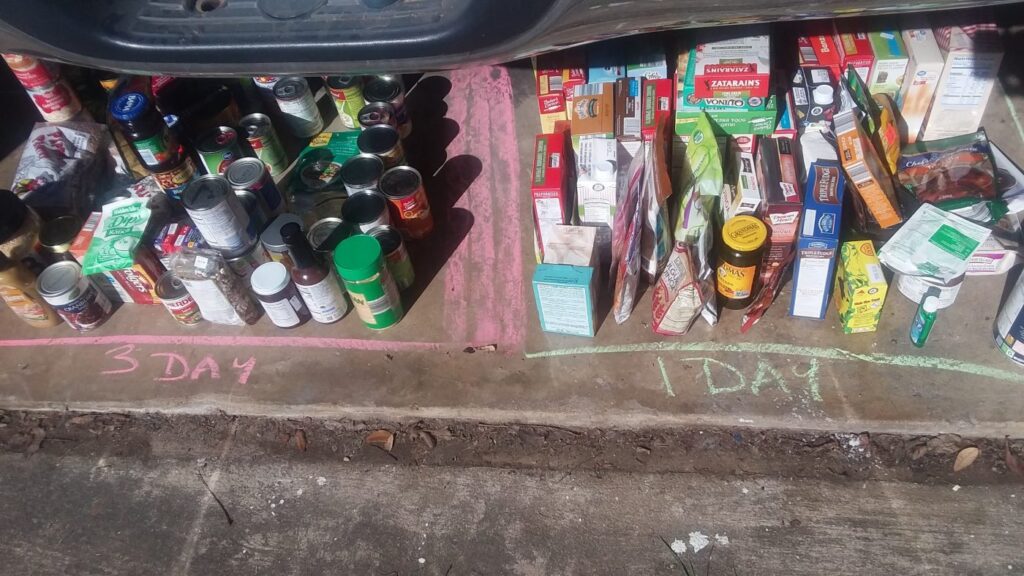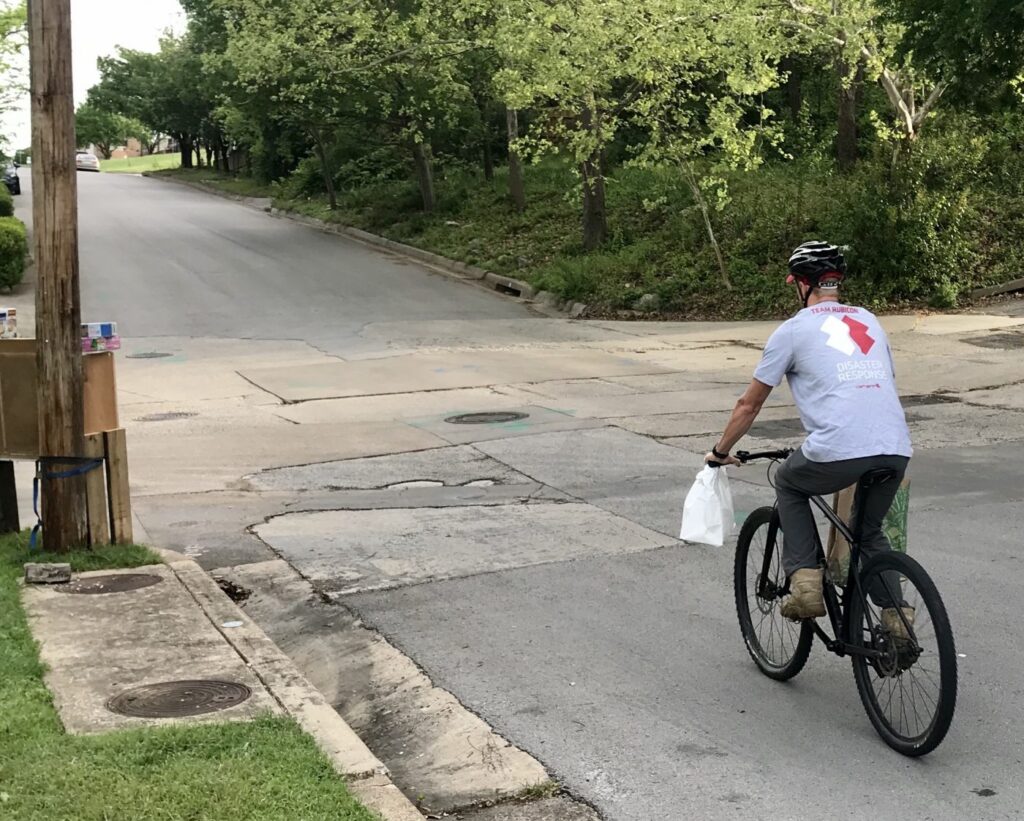As news of COVID-19 grew increasingly dire in early March, Mike and Alexis Piet became concerned about how neighbors in their Fort Worth, Texas, community would weather the crisis. They knew that health concerns and quarantine-related job losses would create hardships for many people in their diverse neighborhood, and they were eager to help.

The Piets are no strangers to service. Before becoming Greyshirts in January of this year, they both had spent more than a decade working in intelligence, the last five at Naval Special Warfare Command, Mike as a contractor and Alexis as a civilian and Marine Corps Reserve officer. Mike, an EMT who is currently enrolled in paramedic school, had been a first responder at the Pentagon on 9/11, and both of the Piets have been on multiple deployments with the military. The idea of helping their neighbors in a time of crisis came naturally to them.
Drawing inspiration from José Andrés’s World Central Kitchen, the Piets decided to tackle hunger in their own neighborhood during the coronavirus outbreak.
“Initially, we put out the idea that if you needed hot food or a meal, if you put a note in our mailbox by 10 o’clock at night, with how many you were looking to feed and what time you could pick up food we would have something ready for you,” Mike said.

Mike Piet on delivery
As the Piets brainstormed ways to make food more accessible, they discovered the Little Free Pantry movement, which is modeled after the Little Free Libraries that have popped up all around the country. By happenstance, a neighbor was renovating her house, and the Piets were able to repurpose a discarded kitchen cabinet for their own little free pantry.
“We just took this cabinet and stocked it with some toiletries and food that we had in our own pantry and then put a sign on it that said ‘take what you need and give if you can.’ The response has been overwhelming, both in terms of need and in terms of donations,” Mike said.
They advertised the pantry to the wider neighborhood through Nextdoor on March 17th, and in just a few short weeks, the lending pantry is now overflowing with donations.
“Because we have had such a great response from the community, we’re now also able to put specific things together for families in need,” Mike said. They can message us with their needs directly through Nextdoor, and we’re able to deliver those directly to people.”
 Mike notes that the pantry has been a benefit not just to individuals and families in need but also to the people who are still out in the community providing services.
Mike notes that the pantry has been a benefit not just to individuals and families in need but also to the people who are still out in the community providing services.
“Our mail person uses it almost all the time because she doesn’t have time to go to the store. The garbage guys have come by, too.”
As concerns about COVID-19 have grown, the Piets have taken extra precautions to ensure the safety of the items they are making available to the public.
“As we get food, we clean it, but we also have a space set up in our garage to quarantine it,” Mike said. “Things that are in tin or in glass, studies show the virus is detectable up to three days later. In paper, the virus is detectable a day later. We basically have triage bins set up in the garage before everything goes out.”
In difficult times, people by nature want to be useful, but the shelter-in-place directives and general sense of anxiety about COVID-19 can make community service feel like an impossible task. The Piets want others to know that there are still ways to contribute.
“I think because [this crisis] is a medical thing, because of the risk it entails, it’s hard to be as active as many people want to be. But, this is something anybody can do, and it’s a great thing for families,” Mike said.
The Piets recommend advertising the pantry through a site such as Nextdoor.
 “Nextdoor has allowed us to get the word out past our neighborhood,” he said. “You know, it’s just a pantry that sits on our corner, but because it’s on Nextdoor, people from a couple miles away are aware of it and are utilizing it.” The couple is now also included in the official Fort Worth community resource page for COVID response and has an unofficial partnership with a local elementary school in a high-need area.
“Nextdoor has allowed us to get the word out past our neighborhood,” he said. “You know, it’s just a pantry that sits on our corner, but because it’s on Nextdoor, people from a couple miles away are aware of it and are utilizing it.” The couple is now also included in the official Fort Worth community resource page for COVID response and has an unofficial partnership with a local elementary school in a high-need area.
Above all, Mike says, it’s important to just take action.
Since the Piets set up the free pantry, it has not only served neighbors in need, it has given the entire neighborhood a sense of purpose as well.
“We’re getting everything from food donations to toiletries. Someone in the neighborhood even sewed hand-made masks,” Mike said. “It’s a great way to keep the community engaged.”
How To Build A Little Free Pantry
As the Piets did, these community pantries can be built from reclaimed resources, such as discarded cabinets, or by hand. The Little Free Pantry blog provides resources and some plans. Some advice from Team Rubicon Greyshirts:
- Consider stocking your community pantry with more than just food. Toilet paper, paper towels, and rubber gloves are also critical resources for many.
- Place your pantry in a well-trafficked area, where people can access it easily without going on someone else’s property.
- Advertise your pantry on a site like Netxdoor or in Facebook groups.
- Accept donations, too: Allowing neighbors to contribute financially can allow you to keep the pantry stocked for those in need. And, allowing others to contribute what they can—like handmade face masks—can allow the entire community to engage.



